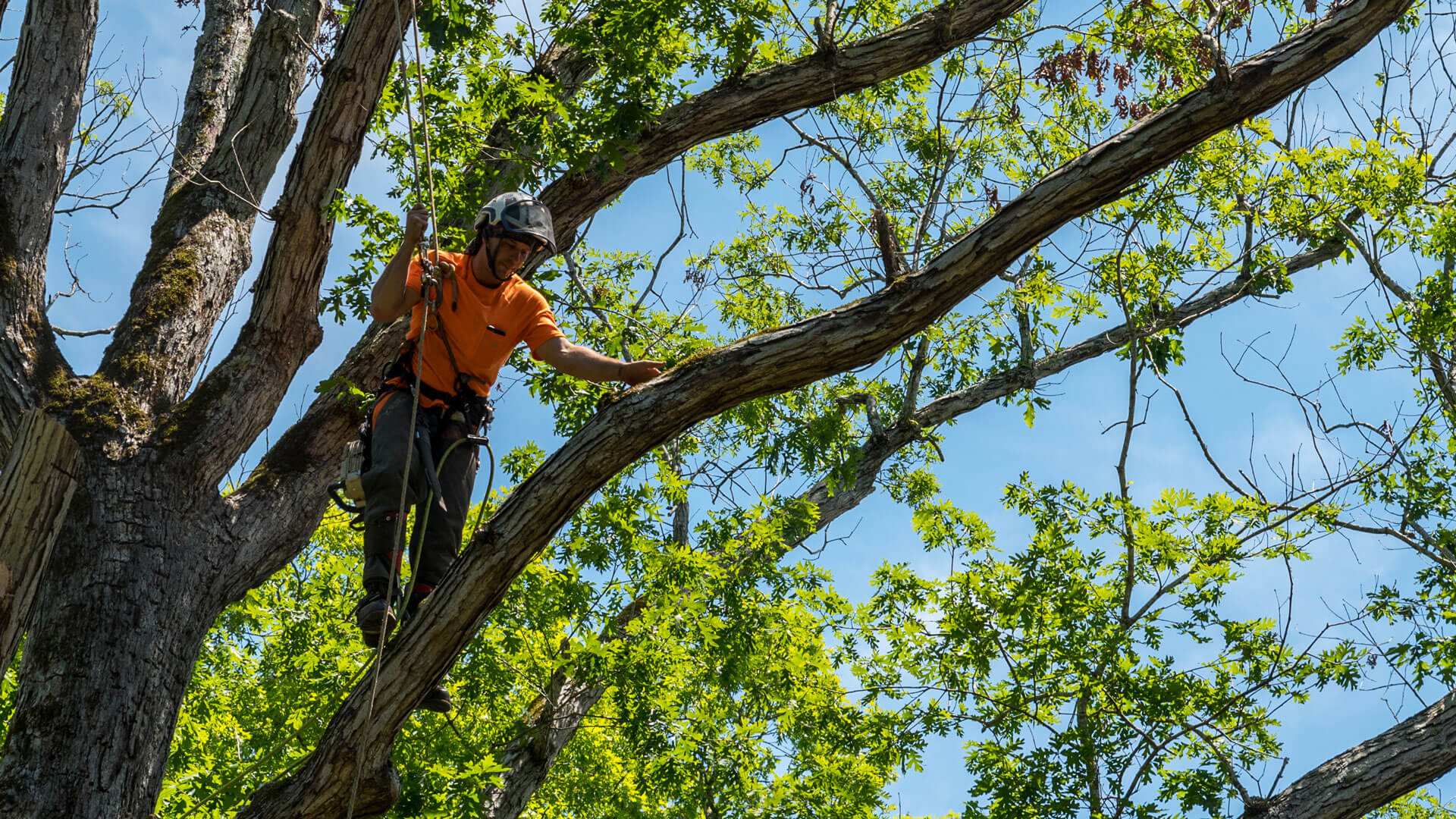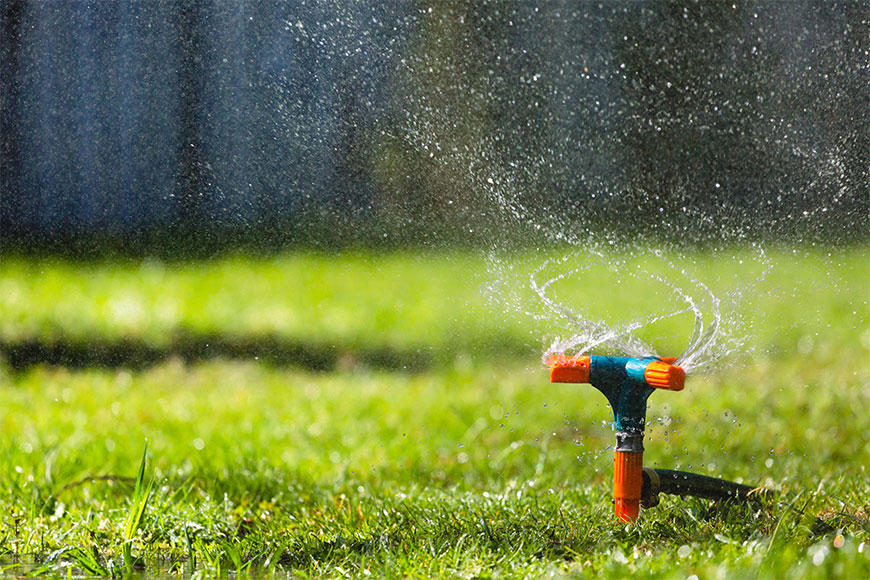Tree trimming is a crucial aspect of landscape maintenance, offering numerous benefits ranging from enhanced tree health to improved aesthetic appeal and safety. At Covenant Landscapes, we recognize the importance of professional tree care and bring tailored lawn care services that help maintain the vitality and beauty of your landscape. This guide aims to demystify the process of tree trimming, delivering the knowledge to understand why, when, and how it should be done.
Understanding Tree Trimming
Trimming your tree entails carefully removing particular components of a tree, including branches, buds, or roots. The process is essential for various reasons, such as eliminating dead or diseased branches, shaping the tree to manage its size or guide its growth, enhancing or preserving its health, minimizing the danger of falling limbs, and boosting light and air flow both within the tree’s canopy and onto the ground beneath.
Why Trim Your Trees?
The health of your trees is paramount. Proper trimming can prevent diseases from spreading by removing sick, broken, or dead branches. It can also enhance the structural integrity of the tree, preventing safety hazards such as falling limbs. Moreover, trimming helps manage the size and shape of a tree, enhancing the overall look and feel of your property.
When to Trim Your Trees
Timing is critical in trimming your tree. Generally, the best time to trim trees is during their dormant season, which is typically in late fall or winter. During dormancy, trees are less susceptible to harm that can occur from trimming, such as pest infestation or disease. However, there are exceptions based on species and the specific reason for trimming.
- Emergency Trimming
Sometimes, immediate trimming is necessary; for instance, if a branch becomes a hazard during a storm or is diseased and poses a risk of infecting other parts of the tree. In such cases, it is important to act quickly to mitigate potential damage.
- Seasonal Considerations
Some trees, especially those that flower in spring, should be pruned right after their blooming period. The timing makes sure that the pruning will not interfere with the flower production for the following year.
Techniques for Effective Tree Trimming
Knowing the different techniques used in trimming trees can enhance your ability to care for your trees properly:
- Cleaning: This technique involves removing dead, diseased, or weak limbs from the crown of the tree. Cleaning is essential to maintaining a tree’s health and aesthetic form.
- Thinning: The process helps to increase light penetration and air movement through the crown, reducing wind resistance and potential storm damage. Thinning should be done carefully to maintain the tree’s structural integrity.
- Raising: Removing lower branches can provide clearance for buildings, vehicles, pedestrians, and vistas. It is needed not to raise the crown excessively to avoid destabilizing the tree.
- Reduction: Reduction trimming is a method used to scale down a tree that has outgrown its space. By carefully cutting back the leading branches and branch tips to secondary branches, such a technique effectively reduces the tree’s overall height and spread. Proper execution of reduction trimming is crucial to preserve the natural shape of the tree and secure its ongoing health.
Practical Steps for Tree Trimming
- Assessing Tree Health: Before any cuts are made, a thorough assessment of the tree’s health is vital. Look for signs of disease, pest infestation, or structural weaknesses. Identifying these issues early can inform the trimming process and prevent the spread of problems.
- Selecting the Right Tools: Using the correct tools for tree trimming affects the quality of cuts and the health of the tree. Hand pruners, loppers, and saws should be sharp and clean. For larger trees, more specialized equipment such as chainsaws may be necessary, and in some cases, the use of aerial lifts or ropes to reach higher branches safely.
- Making Clean Cuts: Proper cutting techniques are essential to prevent damage to the tree. Cuts should be made at the node, where the branch connects to another branch or to the trunk. It helps the tree to heal more efficiently and prevents disease entry. Avoid leaving stubs as they can lead to decay.
- Consider Professional Help: Trimming trees can be hazardous, especially for large trees or those close to power lines or buildings. In such cases, it is advisable to consider professional tree services. Professionals have the training, experience, and equipment to handle complex situations safely and efficiently.
Implementing Advanced Tree Trimming Techniques
Crown Restoration and Espalier Training
For trees that have suffered from poor pruning practices in the past, crown restoration can revitalize their structure. This process involves selective trimming to promote healthier, more natural growth patterns. On the other hand, espalier training offers both functional and decorative benefits. The artistic form of tree trimming is ideal for fruit trees and ornamental plants, as it not only beautifies the space but also facilitates easier fruit harvesting and effective use of limited areas.
Hazard Reduction and Root Pruning
- Hazard Reduction: This technique is great for urban areas where trees are close to homes, power lines, or pedestrian pathways. By removing potentially dangerous limbs, you guarantee safety and prevent possible damage.
- Root Pruning: While less frequently required, root pruning is necessary when roots grow too close to foundations, sidewalks, or underground utilities. It should be approached with care, as improper pruning can harm the tree’s health and stability.
Post-Trimming Tree Care
Watering and Mulching
Maintaining hydration is crucial, especially after a significant trim. Water your trees deeply, which encourages deeper root growth and stability. Complement this with a layer of organic mulch around the tree base. Mulch acts as a barrier that retains soil moisture and regulates temperature, while also breaking down over time to enrich the soil.
Monitoring and Maintenance
- Disease and Pest Monitoring: Keep a vigilant eye on your trees for any signs of distress, such as discolored leaves or unusual bark patterns, which might indicate disease or pest infestations.
- Regular Inspections: Engage with professionals to conduct regular inspections and maintenance. This is particularly important for trees that play a significant role in your landscape’s aesthetics and function.
Professional Assistance
Considering the complexity and risks involved, professional tree services are often a wise choice, especially for large-scale or specialized tasks. Trained arborists have the expertise to handle various trimming techniques safely and effectively so that your trees are not only healthy but also beautifully integrated into your landscape.
By blending thoughtful practices with professional insights, you can create a thriving landscape that reflects your care and dedication. Whether managing young saplings or mature trees, the right approach to tree trimming can significantly impact the health of your trees and the overall beauty of your environment. Remember, the goal is not just to maintain but to enhance, ensuring that every aspect of your landscape, including full lawn maintenance and tree care, contributes to a harmonious and sustainable outdoor space.



